Chickweed is not a weed (at least to me). Chickweed's a beautiful, petite green with a crisp texture and mild, sweet flavor reminiscent of corn silk that adds elegance to any plate it touches, especially giant juicy ones like the water chickweed above, which is my favorite.
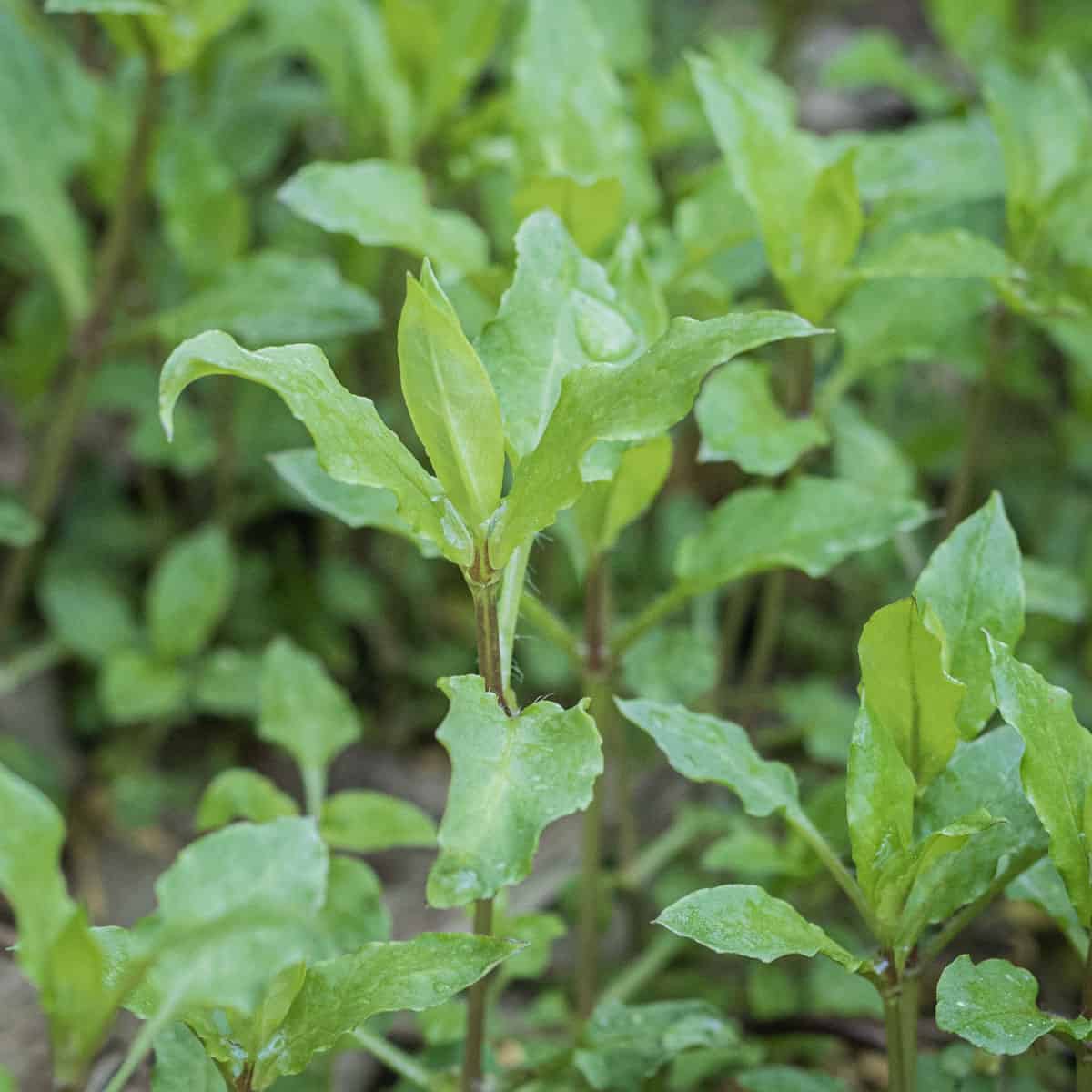
It took me a couple years to find a good patch, but once you find some, it's a fantastic, easy green to know, and one I recommend allowing some space around the edges of your garden or yard since you can force near continual growth during the season by trimming it.
Chickweed(s) that most people eat are going to be a number of different species of plants in the genus Stellaria, and there's a number of them you might see, some being better to eat than others.
Nature's Microgreen
There's a reason they can be tricky to pick out if you're new to foraging: they're small and delicate as opposed to having large leaves or a structure that stand out like, say, dandelions that most people are familiar with Don't overlook it though, to me it's Nature's forage-able microgreen.
Back when I was running restaurants, I shunned commercial micro greens, instead I would order and harvest chickweed and other wild greens myself to take their place since they stand up better to heat and have a superior shelf life.
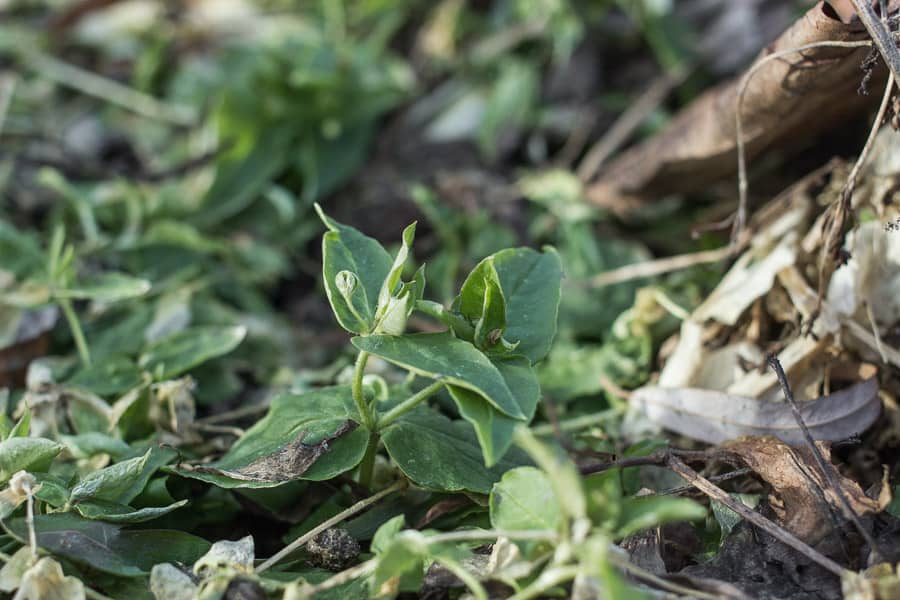
Like hunting other plants and mushrooms, once I knew what it looked like and had picked it a few times I started to see it everywhere. I would find it here and there while I was out on forays, but it wasn't until I found it growing in a friends garden that I got to pick enough to actually do something with.
My girlfriend's mother had been allowing chickweed it to grow in her garden. There's some old knowledge in what she was doing, forgotten techniques of gardening that take into account knowledge of each individual plant, no matter if you planted them, if they were volunteers from piles of seeds left for rabbits to eat, or if they came on their own as "weeds", like the chickweed.
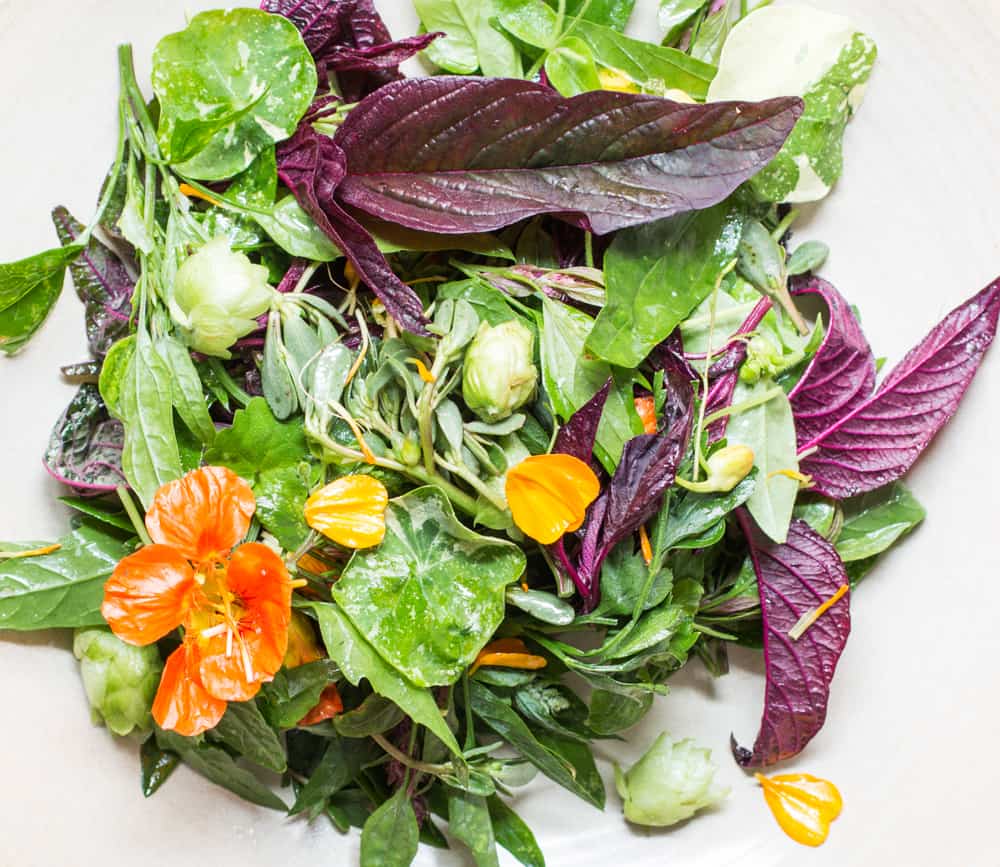
Weeds can be invasive, psychologically and physically. To most self-respecting gardeners, they're appearance is a threat. The secret Dorothy knew was that some are more aggressive than others.
Galinsoga for instance, is invasive, and can go through multiple generations in a year and will choke other plants out quickly. Chickweed and the other plants Dorothy allowed to grow in her garden are more tame, as far as weeds go.

Mowing to force young growth
Watching my girlfriend's mother and her husband go about their basic business one day showed me the trick to keeping a good supply of chickweed around throughout the summer: a lawn mower.
The chickweed grows lower to the ground, and the lower to the ground the better it tastes, since it's younger. They don't plant the chickweed as much as they allow it to grow on the peripheries of where the other plants live.
By mowing down the chickweed when you mow the lawn, you invigorate it's growth and force it back to the earlier stage of growth that's the best for eating. Like just about everything else, young and tender is the way to go with chickweed, as it gets older it can get stringy and tough.
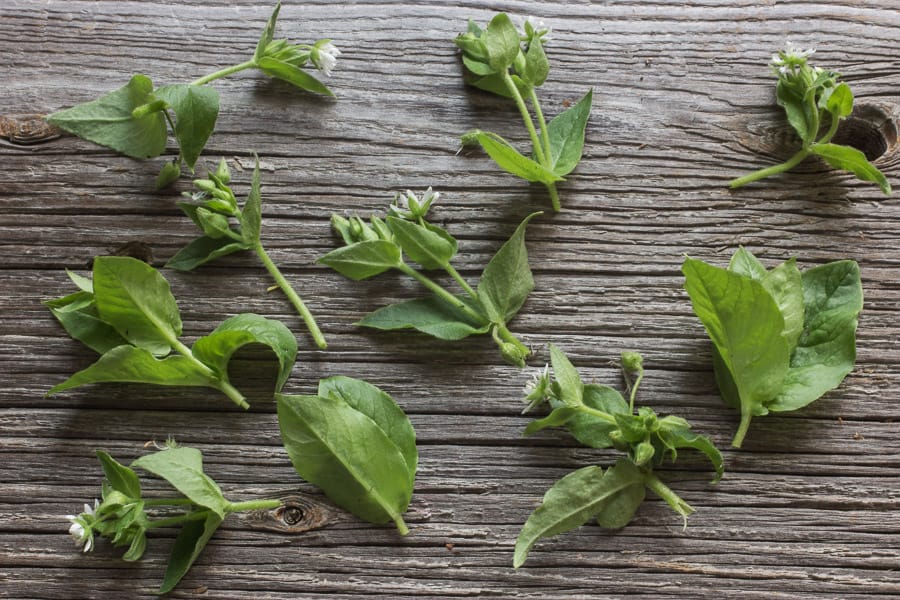
I was also speaking with Sam Thayer a while ago, and we were discussing mowing as a replacement for ruminant-herd grazing, which makes total sense, when you think about it. In Minnesota or Wisconsin, you might think of your lawn mower as a replacement for buffalo, or deer.

Why I harvest from the garden
I don't usually pick chickweed while I'm out foraging for other more elusive things, mushrooms for example. If I can get it, and skip the transportation that could involve having to go back to the car, pack an iced cooler, or some other plan to keep them cool and avoid them wilting in the field, I have more time to hunt mushrooms that I couldn't grow in the garden no matter how hard I tried.
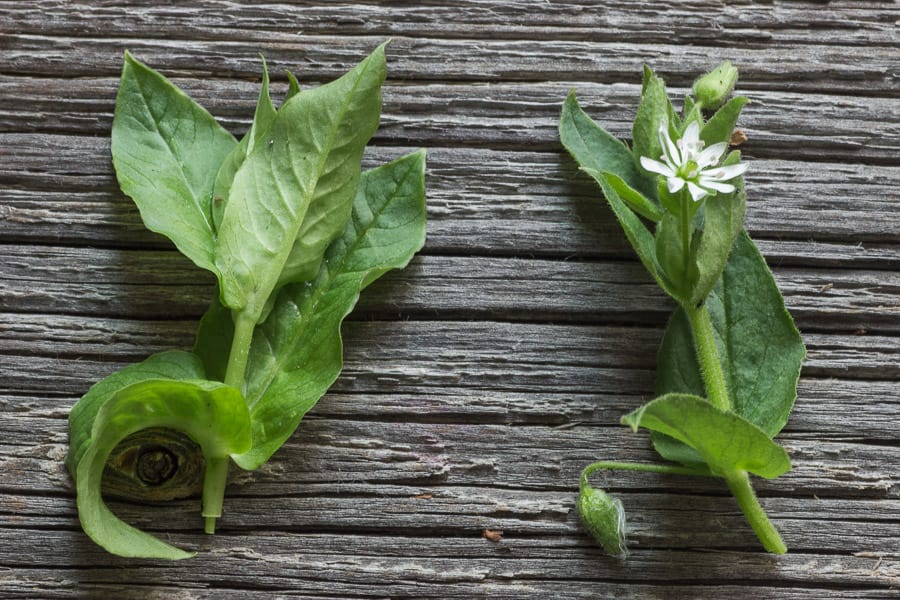
Species I prefer (bigger the better)
There's a lot of different species of "chickweed" out there, technically, the chickweed in your lawn might be Stellaria media, while the chickweed in your neighbor's lawn is Stellaria pubera. If you're wondering, yes, there's a difference. I'm not a botanist, but I can often discern differences in species of things, even if I can't narrow them down to the exact species.
Often it's because of differences in how they taste, with chickweeds, I prefer less-hairy species with larger, juicy leaves. It can be confusing to pick apart differences since multiple species enjoy the same habitat and grow together, but after you pick any plant a few times, you start to develop a relationship with it, an understanding of its features. Here's an up-close picture of two different species.
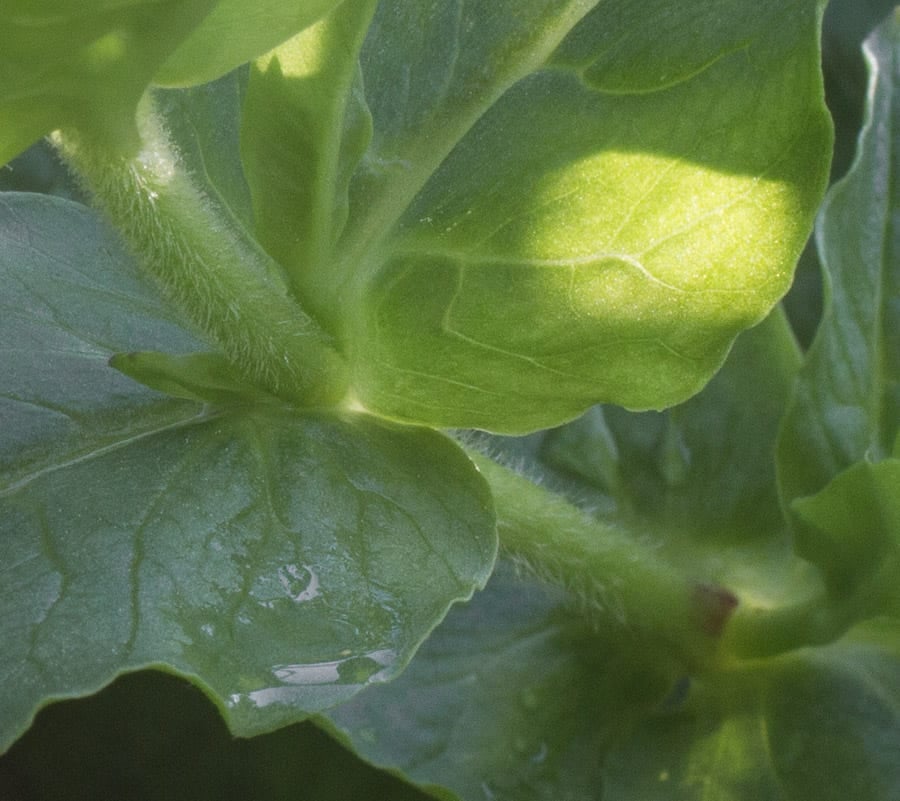
Harvesting
Early in the morning to avoid heat, I go to the garden, take a pair of scissors, grab a handful of chickweed and cut the bunch a few inches off the ground with a scissors. Afterword I put it in a paper bag, then I keep the greens cool as much as possible in the shade while I gather other greens for the restaurant.
Fall harvest
Like a lot of other greens, after it grows up and flowers in the Summer, chickweed will return in the fall with an additional harvest, and I've picked it as late as December in Northern Wisconsin and Minnesota.
The fall chickweed is similar to fall nettles: a little more rugged and stemmy, or "leggy" in chef parlance. I prefer spring and summer chickweed, but in the fall when all the other greens are gone, I harvest the leggy chickweed with abandon, since there aren't many other wild greens available.
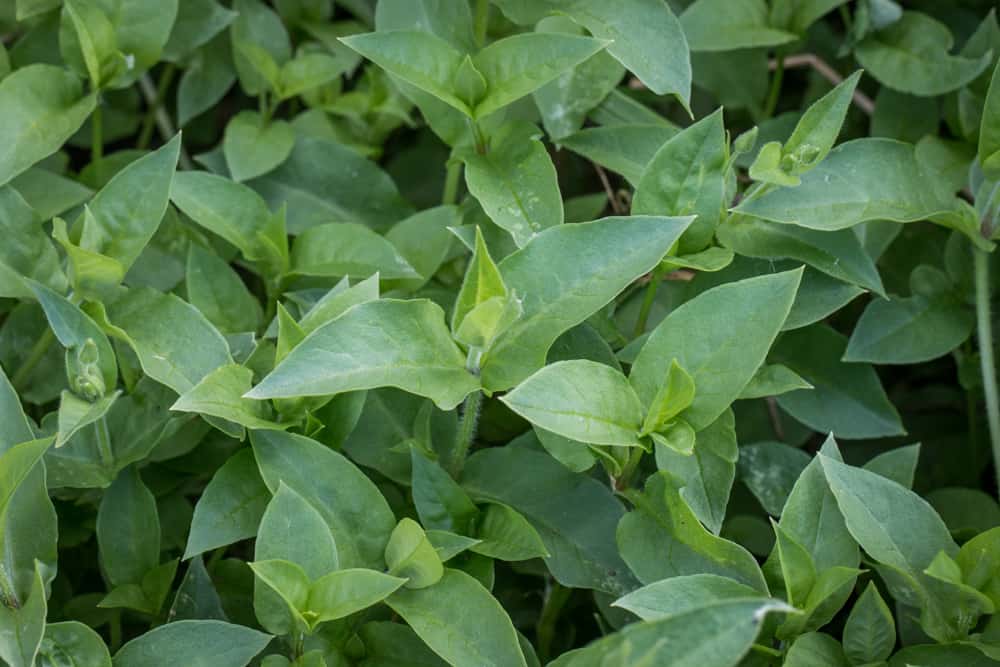
Is it worth it?
A while ago I got a message from another well known forager who told me that he would never bother cooking with chickweed since it could never make up the calories it takes to pick since the plant is so small.
To be clear, this is total B.S.. While yes, some types of chickweed are very small, others are not, and my patches specifically of water chickweed I harvest in Northwest Wisconsin are, by chickweed standards, huge. Don't listen to anyone who says this plant isn't worth picking.
In areas where chickweed can form a good colony, it will produce dense, thick mats of fluffy, juicy leaves you can harvest quickly. I like to think of it as giving the patch a haircut. In my best patch, which is in clearings around old farm fields, It is nothing for me to harvest pounds of fresh chickweed in moments with a scissors and a basket. Pounds.
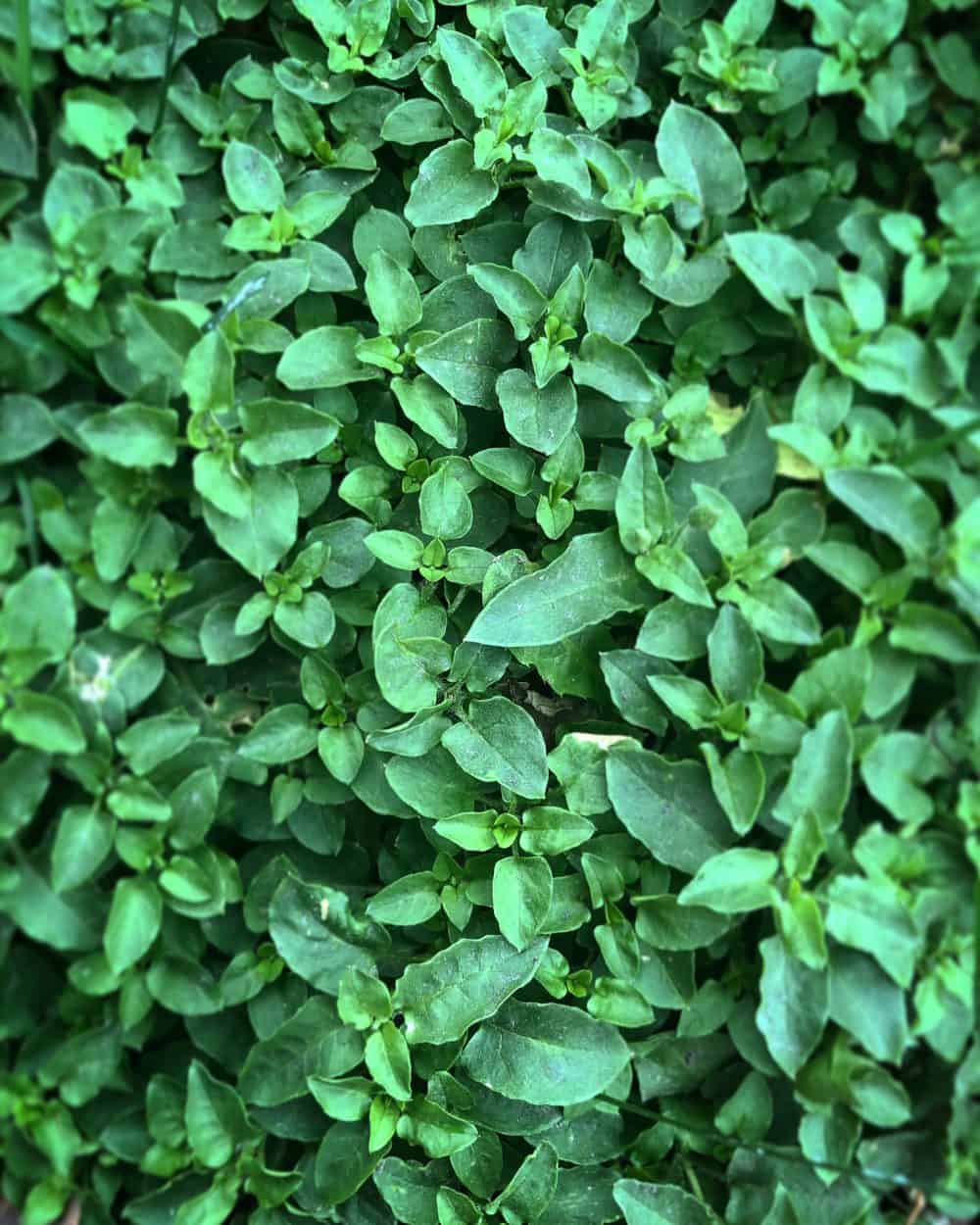
Market Price
Chickweed is catnip for chefs who want small garnishing greens and salads. 10$ / quart is a fair price I have both paid and sold it for.
Storage
Once the greens get to the restaurant they're immersed in cool water for 5-10 minutes to crisp them if they've wilted at all from travel, then rolled in a towel to shed water, or spun in a salad spinner if the greens are hardy like galinsoga, amaranth or dandelions. Afterword they're refrigerated immediately. The work isn't done though, they still need to be trimmed to remove any tough lower portions so they can be used at a moment's notice.
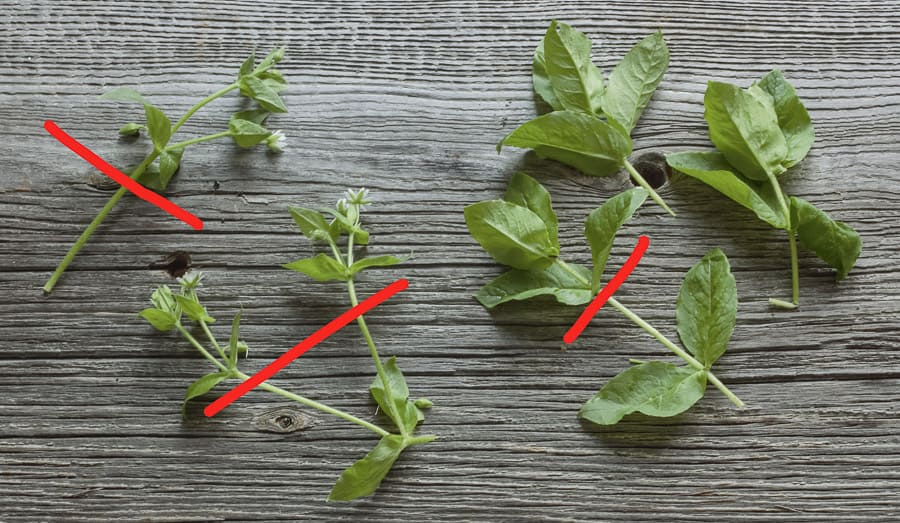
The chickweed can be trimmed right away and stored or stored and then trimmed into serve-able pieces for service later. For storing under refrigeration, restaurant scenarios are different than how I treat greens. At the restaurant, I store greens in plastic fish boxes with firm sides that stop greens from getting crushed and allow for stacking to save space
. At home you can use plastic ziploc bags with a slightly damp cloth or towel inside, which works good too. Store your greens at home however you like, but try refreshing whatever you pick in water before you refrigerate it, it restores life to any greens, not just chickweed.
Cooking
Mostly, I eat it raw
One of my favorite ways to describe it to chefs is as "Nature's Microgreen", since garnishing plates with baby greens can add a nice touch, especially to cold dishes.
Speaking of cold too, that is how I use chickweed most of the time, but not all the time, as I'll show you. If you want to cook it, you're going to need a giant haul of it, and, you should know that chickweed will cook down to nothing after steaming or cooking in a pan.
Wilting in a bowl
This is a fun way I might incorporate chickweed into a simple meal of leftovers: hot and cold. I put a handful of chickweed into a bowl, top it with steaming hot veggies, meat, rice, etc, then top it off with some extra greens.
The greens in the bottom of the bowl wilt and cook a bit, but they don't lose as much volume as if you were to cook them in a pan.

Dave
I like it a lot a sub for sprouts in Pad Thai. Similar texture and flavor, it’s just slightly sweeter.
Alan Bergo
Thanks Dave
SLB
"would never both cooking with chickweed" --> "would never bother cooking with chickweed" 🙂
Alan Bergo
Thanks for the copy edit.
Lisa
So I just decided to try this common green today-It grows abundantly here in the southeast Spring. I think my variety is the smaller-leafed one. I'm going to pinch off the leafy segments, leaving the stem behind. The whole plant seems tender though... I'll try it raw in my salad and also cooked! I look forward to reading more of your articles as I have 15ac with lots of flora to learn about! Bon appetit!
Janna
Our Creator, YHWH, has given us everything we need for food and medicine. I love the abundance He has blessed us with. It's all there. All we have to do is look for it. And the wonderful thing about edible "weeds" is that they are free! A win win for us all.
Alfred Ismanto
I agree! Our God has blessed us indeed! Green watered plant growing without our care yet God watered and cared for my garden. My house is surrounded and blessed also with four season of different symphony of flowers which bloomed, spring and died in rotation to live and bloom again the next season taking each its one by one. The lavender started blooming now in spring while the camelia started to die off and will come back next winter and to sleep for now. Now the roses had sprung and bloomed as well as the chickweed. Soon the passion fruit flower will spring up everywhere along my fence....how wonderful our God is! We truly know little how Great He is while we see the popcorn tree leaves are gone and seems to have died, it is just sleeping! Jesus died in our place and the devil thought "that is it, He has lost and God is done for!" He did not realise how sovereign our God wad and is!!! Haleluya! Jesus had risen and now deserve all glory! Amen
Alan Bergo
God loves chickweed, apparently.
Rachel
AMEN
lisa
Very nice article! 'Tis the season. Just want to note that the term "invasive" is reserved for non-native plants that have a negative impact on native ecosystems. Naughty natives that don't behave are called "aggressive." While chickweed originated from Eurasia, it is considered "naturalized" in that it found an ecological niche in N.A. and it doesn't disrupt local flora or fauna.
Alan Bergo
That's a good distinction to make. It's been a few years-- a good time to look this post over and give it a refresher. Thanks Lisa.
lisa
Cool. Sorry I posted twice--the first, shorter one got away from me before I was done. You can delete it!
lisa
Very nice article! 'Tis the season. Just want to note that the term "invasive" is reserved for NON-NATIVE plants that have a negative impact on native ecosystems. Naughty natives that don't behave are called "aggressive."
Janet Lee
Thank you for sharing.????
Alan Bergo
You're welcome. This is one of my favorite plants to eat. I'm still working with a foot of the ground in Wisconsin here though!